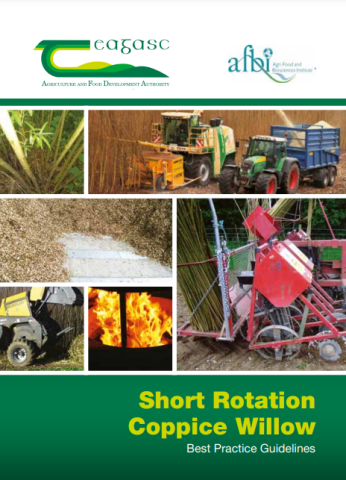Introduction
One tonne of willow has an energy content of 13.2 Giga Joules (GJ) (at 20% moisture), so one hectare produces 172 GJ of energy per year. For comparison 1000 litres of home heating oil has an energy content of 38 GJ meaning that one hectare of willow wood chip at 20% moisture has the same energy content as 4,500 litres home heating oil. This figure will vary slightly depending on moisture content and annual yield. The ROI and the UK have challenging targets to increase energy production from renewable sources and to reduce the production of greenhouse gases (GHGs).


